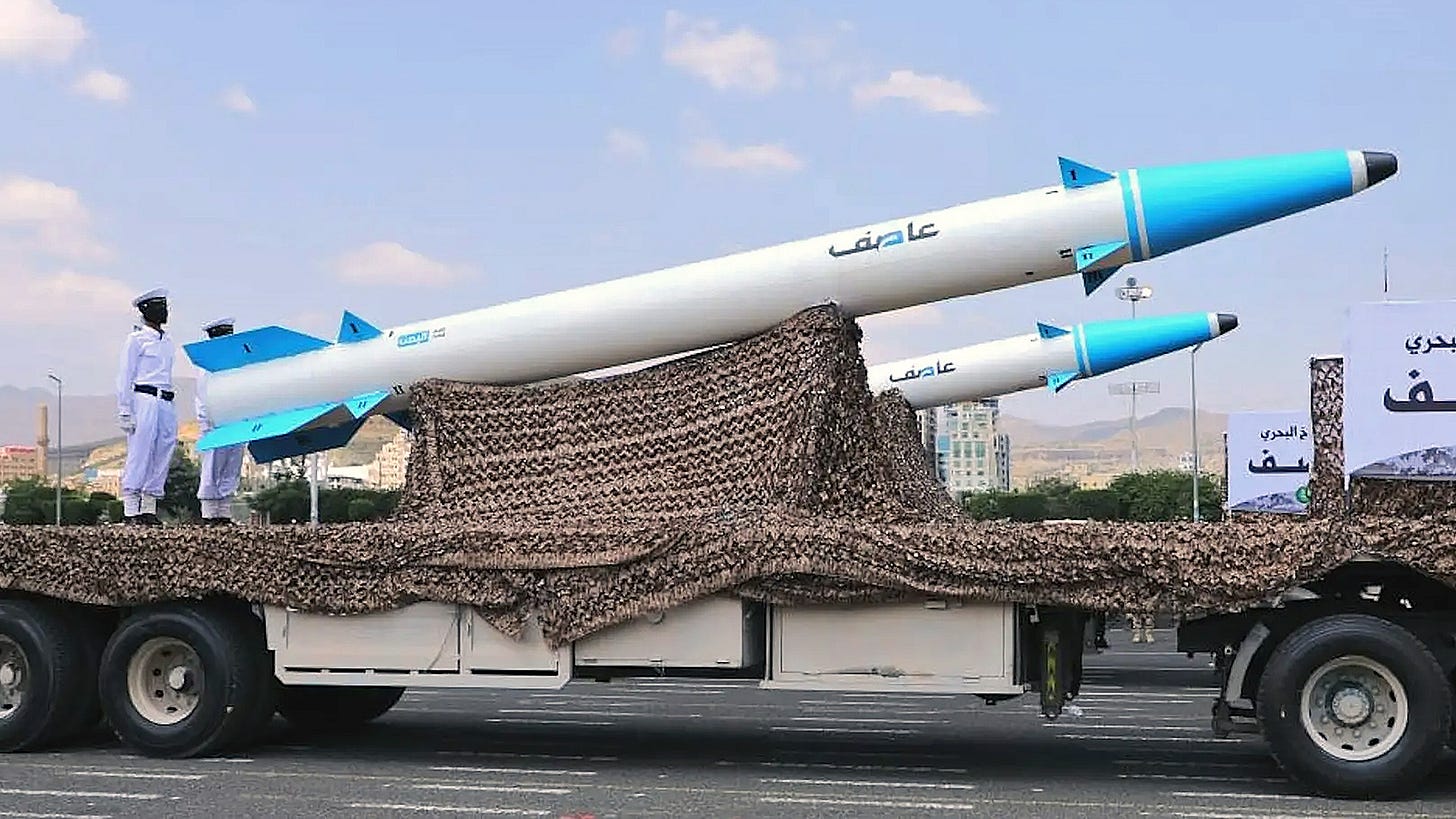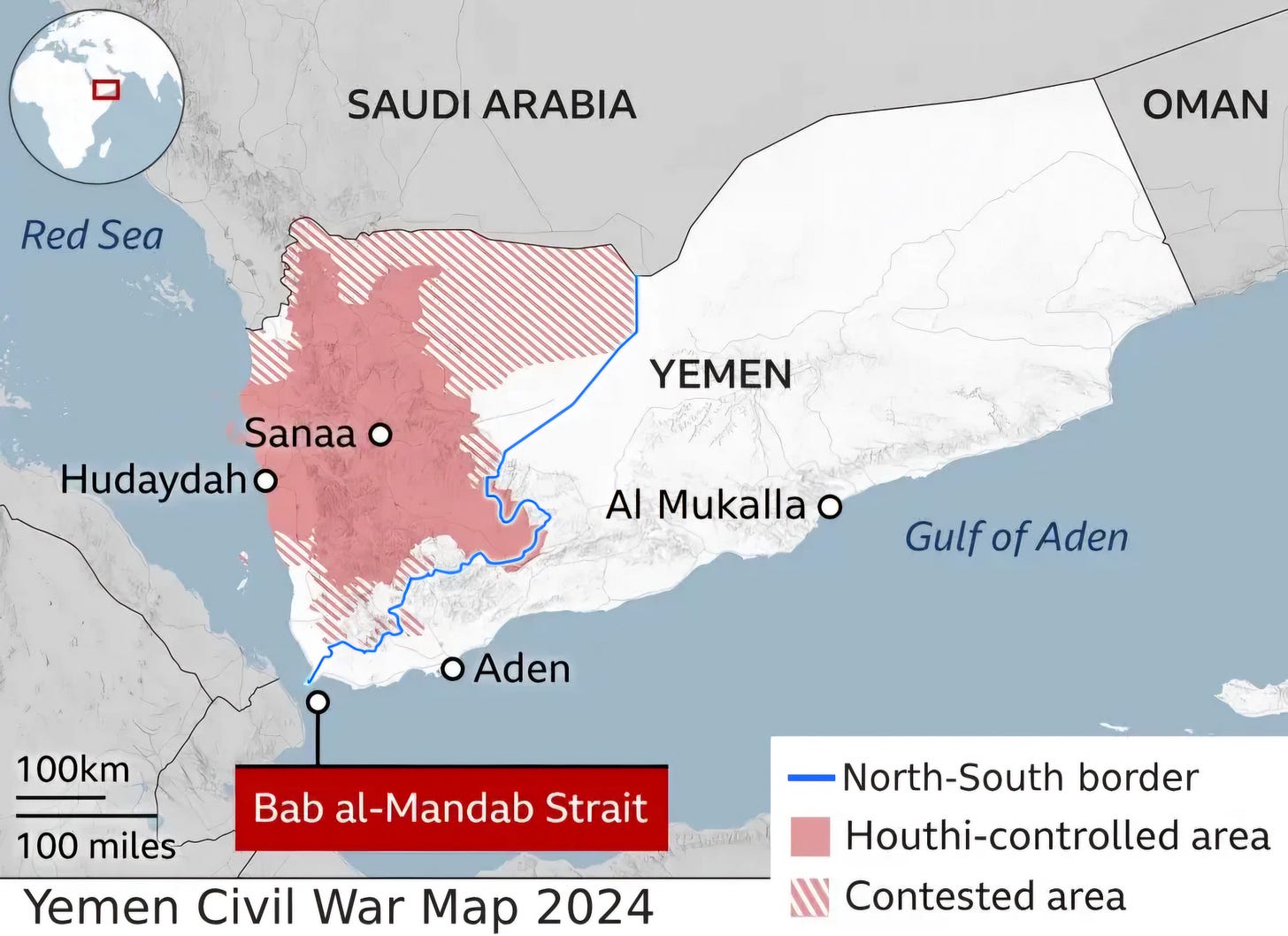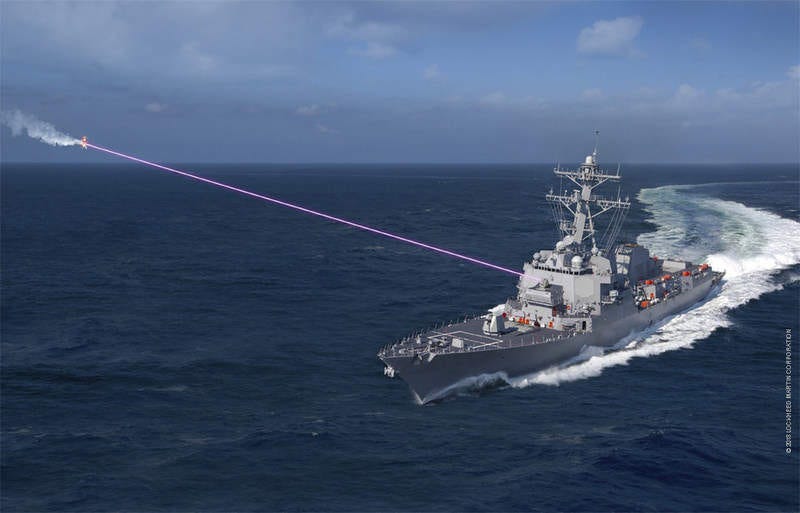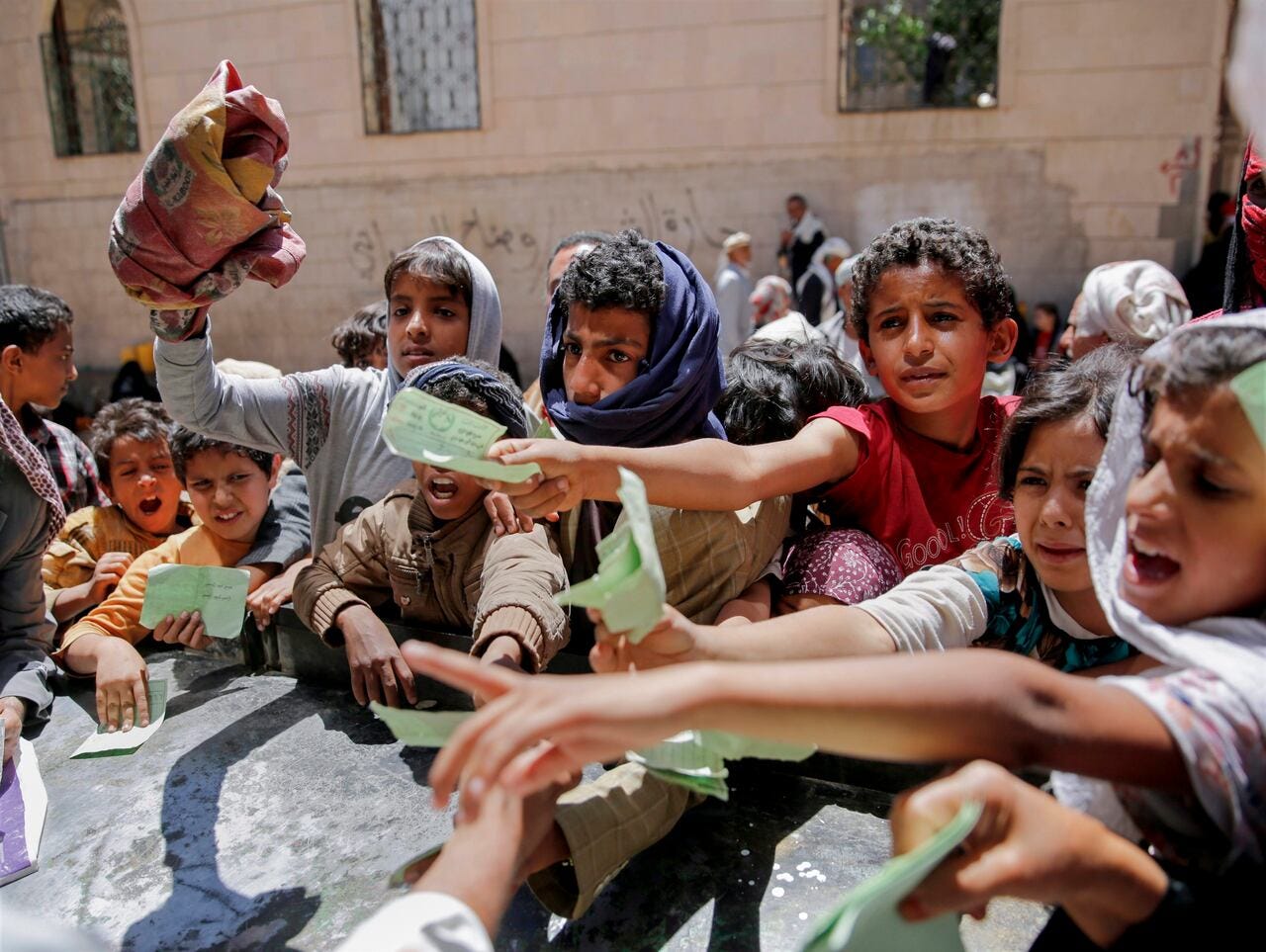Houthi Missile Barrage Targets U.S. Warships
How a Yemeni Civil War Became a Powder Keg Threatening U.S. Security, Global Trade, and a Showdown with Iran
Introduction: Houthi Missile Attacks on U.S. Warships in the Red Sea
On September 27, 2024, Houthi rebels in Yemen launched a coordinated missile and drone attack on U.S. warships in the Red Sea. The U.S. Navy, in a defensive effort, successfully intercepted nearly two dozen missiles and drones, averting disaster (Dillon, 2024). Among the targeted ships was the USS Stockdale, an Arleigh Burke-class destroyer known for being outfitted with advanced directed energy weaponry like the ODIN laser system (Army Recognition, 2021). This bold move by the Houthis underscores the growing threat to global trade and the broader risk of the U.S. being drawn into a greater conflict with Iran. As this conflict escalates, it not only impacts regional stability but also threatens to disrupt vital trade routes like the Suez Canal, increase the cost of goods for Americans, and raise the stakes for U.S. national security.
The Arab Spring and the Obama Administration’s Role in Yemen’s Collapse
The civil war in Yemen is rooted in the political instability that arose during the Arab Spring in 2011. Long-standing President Ali Abdullah Saleh was ousted, creating a power vacuum that led to internal divisions. The Obama administration, with Hillary Clinton as Secretary of State, supported the political transition, but this strategy inadvertently left Yemen vulnerable. The Iranian-backed Houthi rebels took advantage of the chaos, seizing control of the capital, Sanaa, in 2014.
Obama’s reliance on Saudi Arabia and regional actors to stabilize Yemen, coupled with increased U.S. arms sales to the Saudis, failed to prevent the war’s escalation. These policy decisions not only emboldened Iran’s proxies in Yemen but also deepened the United States’ entanglement in the conflict. Under Clinton’s watch, arms sales to Saudi Arabia were expanded, strengthening their military campaign against the Houthis. These actions, while aimed at maintaining regional security, inadvertently prolonged the war, pushing Yemen further into chaos and turning it into a critical front in the broader Saudi-Iranian proxy war (Pramudia, 2024).
Yemen: A Proxy War with Iran
The war in Yemen is not just an internal conflict; it is a proxy war between Saudi Arabia and Iran. Tehran’s support for the Houthi rebels, including weapons, drones, and training, has turned Yemen into a key battleground in the broader struggle for dominance in the Middle East. Control over Yemen and its strategic position along the Bab-el-Mandeb Strait allows Iran to threaten global oil supplies and challenge U.S. and Saudi interests in the region.
By backing the Houthis, Iran has used Yemen as a staging ground for missile and drone attacks, including the recent strikes on U.S. warships in the Red Sea. These provocations could disrupt global oil supplies, further raising prices at a time when Americans are already feeling the pinch of rising inflation. The attack on U.S. ships demonstrates Iran’s willingness to directly challenge U.S. interests, raising the potential for more aggressive confrontations (International Monetary Fund [IMF], 2024).
Impact on U.S. Trade and Economic Security
The instability in Yemen poses a direct threat to global trade, particularly through the Red Sea and the Suez Canal, which handles 12% of the world’s trade, including significant oil and gas supplies (IMF, 2024). Disruptions in this vital route—whether from missile attacks, drone strikes, or increased insurance costs for shipping—could cause a dramatic rise in the cost of goods in the United States.
With American families already facing higher prices due to inflation, any instability in the Red Sea could further drive up the cost of imported goods, including fuel, electronics, and food products. Shipping companies, faced with increased risks, may be forced to reroute vessels around the Cape of Good Hope, significantly lengthening transit times and increasing costs. These additional expenses would be passed on to U.S. consumers, causing further strain on household budgets.
Moreover, any disruption in the Suez Canal would ripple through global supply chains, potentially leading to shortages, delays, and price hikes in a wide range of products. This is not just a regional issue; what happens in the Red Sea affects the prices Americans pay at home (IMF, 2024).
The Importance of Advanced Weaponry: ODIN and the Future of U.S. Defense
The recent attack on U.S. warships in the Red Sea may have demonstrated the critical importance of advanced defense technology like the ODIN (Optical Dazzling Interdictor, Navy) laser weapon. The USS Stockdale, reported to be one of the ships involved in defending against the barrage of missiles and drones, is outfitted with the ODIN laser system (Army Recognition, 2021). This cutting-edge directed energy weapon is designed to counter small drones and unmanned aerial systems (UAS), which are increasingly being used by Iran-backed Houthis in their attacks.
Though details of the defense operation have yet to be fully confirmed, it’s possible that systems like ODIN played a vital role in neutralizing the threat. The ODIN weapon, developed as part of the U.S. Navy’s effort to improve its defense capabilities, provides a critical technological advantage. Laser weapons like ODIN are not only cost-effective but also capable of precision targeting, making them essential tools in the evolving landscape of modern warfare.
Investing in advanced weapons systems is crucial for maintaining U.S. military superiority. As threats like those posed by Iranian-backed forces grow more sophisticated, our ability to counter them with systems like ODIN becomes ever more important. These technologies can provide both offensive and defensive capabilities, allowing the U.S. to protect its interests and prevent the escalation of conflicts without relying solely on conventional weapons.
The deployment of laser weapons on U.S. naval vessels is part of a broader strategy to ensure that the U.S. Navy can defend against a variety of threats, including drone swarms and missile barrages like those recently seen in the Red Sea. The success of such systems will be critical as the U.S. seeks to maintain peace and stability in volatile regions while avoiding larger, costlier conflicts.
Escalating Tensions and the Risk of Greater U.S. Involvement
The recent Houthi attacks on U.S. ships raise serious questions about national security. Do we want to see our military drawn into another Middle Eastern conflict, especially one that could involve direct confrontation with Iran? Iran’s continued support of the Houthis and its destabilizing actions in the region must be met with a clear and decisive U.S. response, but one that avoids another costly and prolonged military engagement.
Iran’s strategy is clear: to use the Houthis as a proxy to exert control over the Red Sea and challenge U.S. and Saudi interests. If these provocations go unchecked, they could escalate into a broader regional conflict, drawing the U.S. further into the fray. Maintaining peace and protecting U.S. interests will require both diplomatic and military strategies, including continued investments in technologies like the ODIN laser weapon to ensure we remain capable of countering these growing threats.
The Humanitarian Crisis: A Further Imperative for Action
While the economic and security consequences of the Yemen conflict are significant, the humanitarian crisis should also not be overlooked. Yemen has become the site of one of the world’s worst humanitarian disasters, with millions of people suffering from starvation, disease, and the collapse of basic services. Over 20 million Yemenis require humanitarian aid, and the Saudi blockade of Yemeni ports has restricted access to vital resources such as food and medicine (United Nations, 2020).
Bringing peace to Yemen is not only in the best interest of U.S. national security and economic stability but also a moral imperative. Addressing the conflict in a way that brings stability to the region will not only ease the suffering of millions of civilians but also help prevent further radicalization and instability in the region.
Conclusion: A Conflict We Can No Longer Ignore
The war in Yemen is not just a far-off conflict with no bearing on the United States. It is a proxy war with Iran that threatens global trade, U.S. economic security, and our national defense. The recent Houthi missile attacks on U.S. warships in the Red Sea highlight the real and growing danger that this conflict poses to American interests. The U.S. must respond by both reassessing its strategic involvement and investing in advanced defense systems like the ODIN laser weapon to ensure our military remains capable of defending against modern threats.
The economic consequences of this war, in the form of higher prices for goods, fuel, and shipping, are already being felt by American consumers. If the conflict continues to escalate, it will not only affect our wallets but also our national security. The U.S. cannot afford to ignore the situation in Yemen any longer. A comprehensive strategy is needed—one that addresses the Iranian threat, stabilizes the region, and promotes the development of the advanced military technology required to keep America safe in an increasingly dangerous world.
References
Army Recognition. (2021, February 22). US Navy USS Stockdale (DDG 106) Arleigh Burke-class destroyer is now armed with ODIN laser weapon. Retrieved from https://armyrecognition.com/news/navy-news/2021/us-navy-uss-stockdale-ddg-106-arleigh-burke-class-destroyer-is-now-armed-with-odin-laser-weapon
Dillon, K. (2024, September 27). US warships under attack in Red Sea: Nearly 2 dozen incoming missiles, drones shot down. Fox News. Retrieved from https://www.foxnews.com/world/us-warships-under-attack-red-sea-nearly-2-dozen-incoming-missiles-drones-shot-down
Hassan, R. A. A. (2024). Money Supply Dynamics and Macroeconomic Indicators in Yemen: Insights from a Time-Series Analysis. Advances in Urban Regional Development and Planning, 1(2), 1-9.
International Monetary Fund. (2024, March 7). Red Sea attacks disrupt global trade. IMF Blog. Retrieved from https://www.imf.org/en/Blogs/Articles/2024/03/07/red-sea-attacks-disrupt-global-trade
Pramudia, P. S. (2024). Arming the Yemen Conflict: Examining the Nexus of the US-Saudi Arms Deal, Modern Capitalism, and the Prolonged Warfare. Journal Humaniora, 2(1), 72-81.
United Nations. (2020). Yemen: UN warns of catastrophic death toll. Retrieved from [URL].







